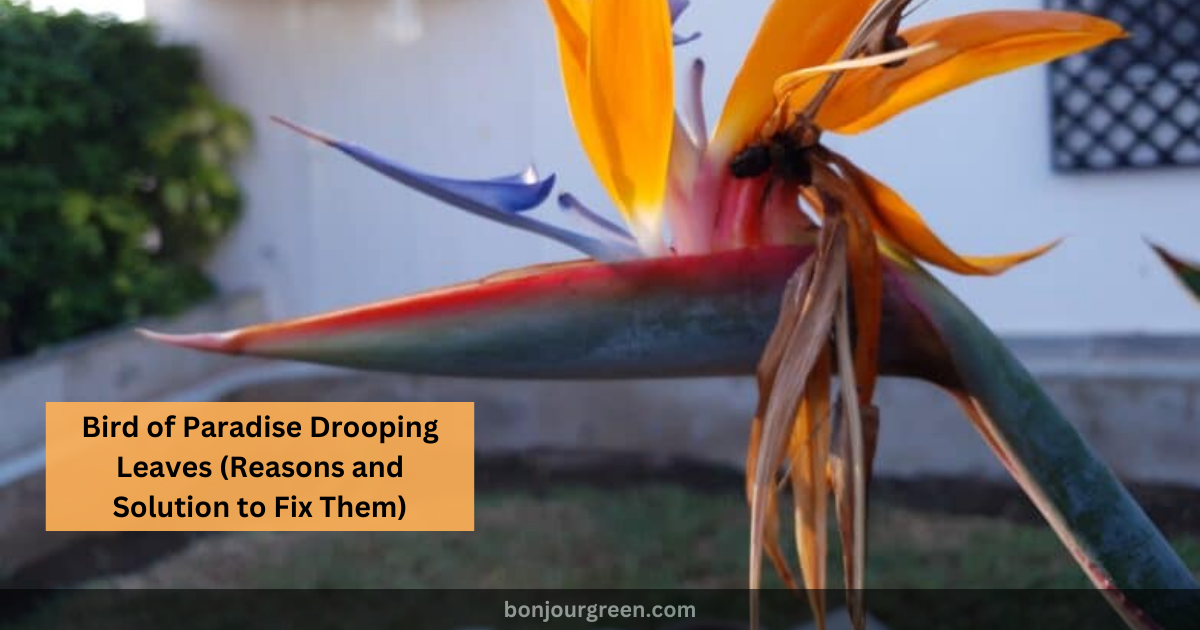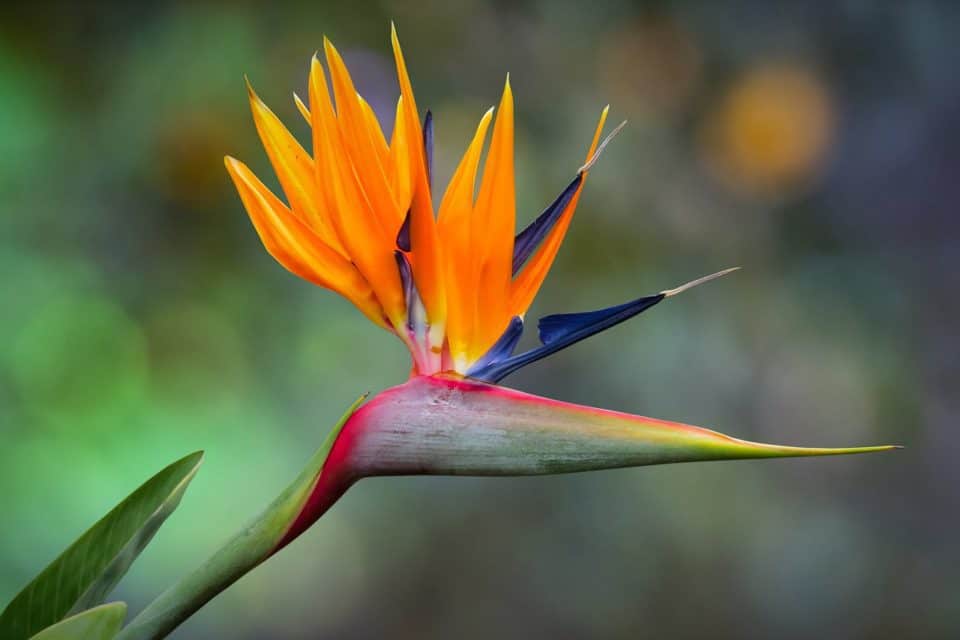Why Is My Bird Of Paradise Drooping – Bird of Paradise plants are renowned for their stunning foliage and vibrant flowers, which can transform any space into a tropical paradise. However, if you notice your Bird of Paradise drooping, it can be concerning. Understanding the causes behind this drooping is essential for restoring your plant’s health and vibrancy. In this comprehensive guide, we will explore various factors that might lead to drooping in Bird of Paradise plants, including watering issues, lighting conditions, environmental factors, and pests. We will also provide solutions to help you revive your plant.
Common Reasons for Drooping in Bird of Paradise 🌴
Drooping leaves in a Bird of Paradise can signal several underlying issues. Here are the primary culprits:
1. Watering Issues
One of the most common reasons for drooping leaves is improper watering. Both overwatering and underwatering can stress the plant, leading to drooping.
- Overwatering: This occurs when the plant receives more water than it can absorb, leading to root rot. Root rot damages the roots, preventing them from taking up essential nutrients and water.
- Underwatering: Conversely, not providing enough water can cause the plant to droop as it struggles to sustain itself.
To determine if your Bird of Paradise needs water, check the top inch of the soil. If it’s dry, it’s time to water. If it’s still moist, wait a few more days.
2. Insufficient Light Conditions ☀️
Bird of Paradise plants thrive in bright, indirect sunlight. If your plant is not receiving enough light, it may exhibit drooping leaves. Here’s how to determine if lighting is an issue:
- Observe the light levels in the area where your plant is placed. If it’s too dim or located far from a window, consider relocating it.
- Signs of insufficient light include pale foliage and slow growth.
3. Environmental Stress
Bird of Paradise plants are sensitive to changes in their environment. Fluctuations in temperature and humidity can contribute to drooping:
- Temperature: These plants prefer temperatures between 65°F and 70°F (18°C and 21°C). Sudden drops in temperature or exposure to cold drafts can cause leaves to droop.
- Humidity: A lack of humidity can lead to drooping and browning leaves. Bird of Paradise plants thrive in humid conditions, so if your home is dry, consider using a humidifier or misting the leaves.
4. Nutrient Deficiency
Nutrients are vital for the overall health of your Bird of Paradise. A lack of essential nutrients can lead to drooping:
- Potassium: Essential for strong cell structure, a deficiency can cause weak, drooping leaves.
- Magnesium: Important for photosynthesis, magnesium deficiency can cause leaf curling and drooping.
Regular fertilization during the growing season can help ensure your plant receives the nutrients it needs.
5. Pest Infestation 🐞
Pests can wreak havoc on your Bird of Paradise, leading to drooping leaves. Common pests include:
- Spider Mites: These tiny pests suck the sap from leaves, causing drooping and discoloration.
- Mealybugs: These insects can create a sticky residue on your plant and lead to leaf drooping.
Check your plant regularly for signs of pests and treat infestations promptly to prevent damage.
How to Revive a Drooping Bird of Paradise
Now that we’ve identified the possible causes of drooping, let’s explore solutions to revive your Bird of Paradise:
1. Correct Your Watering Routine
Establish a proper watering schedule by following these tips:
| Condition | Watering Action |
|---|---|
| Overwatered | Reduce watering frequency; ensure proper drainage. |
| Underwatered | Water thoroughly until moisture reaches the root zone. |
Always ensure your pot has drainage holes to prevent water from sitting at the bottom.
2. Adjust Light Conditions ☀️
To optimize your Bird of Paradise’s light exposure, consider these adjustments:
- Move your plant closer to a south or west-facing window for bright, indirect sunlight.
- Use sheer curtains if the sunlight is too intense to prevent leaf burn.
3. Stabilize Environmental Factors
To ensure your plant thrives, pay attention to its environment:
- Maintain temperatures between 65°F and 70°F (18°C and 21°C).
- Increase humidity levels by misting the leaves or placing a humidity tray filled with water near the plant.
4. Provide Nutrient-Rich Fertilizer
Regular fertilization can help restore nutrients to your Bird of Paradise:
- Use a balanced, water-soluble fertilizer during the growing season (spring and summer).
- Follow the manufacturer’s instructions for dilution and frequency.
5. Manage Pest Problems 🐞

If you notice signs of pests, take immediate action:
- Isolate the affected plant to prevent pests from spreading.
- Use insecticidal soap or neem oil to treat infestations.
- Regularly inspect your plant for signs of pests, especially on the undersides of leaves.
Additional Tips for Healthy Bird of Paradise Plants: Why Is My Bird Of Paradise Drooping

Aside from addressing drooping, here are some tips to ensure your Bird of Paradise remains healthy:
1. Pruning
Regular pruning helps promote healthy growth and removes dead or yellowing leaves. Use sterilized scissors to avoid introducing disease.
2. Repotting, Why Is My Bird Of Paradise Drooping
If your Bird of Paradise has outgrown its pot, consider repotting to provide fresh soil and room for growth. Spring is the best time for repotting.
3. Monitoring Growth Patterns
Keep an eye on your plant’s growth. If it consistently droops or exhibits other health issues, reassess your care routine.
Conclusion
Caring for a Bird of Paradise involves understanding the signs it displays, such as drooping leaves. By addressing water, light, environmental factors, and pests, you can effectively revive your plant and enjoy its stunning beauty for years to come. Remember, a little knowledge goes a long way in ensuring your Bird of Paradise thrives! 🌺
